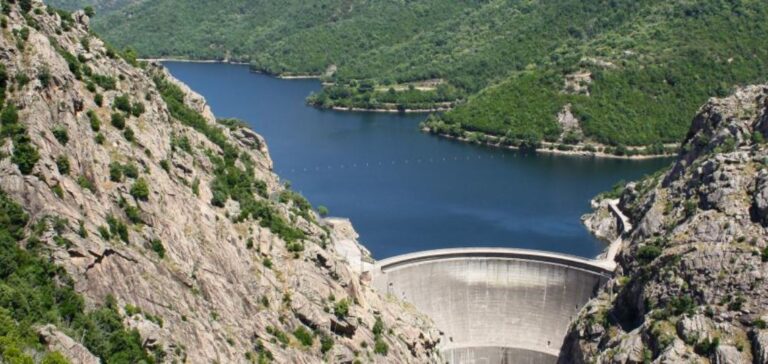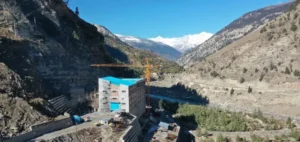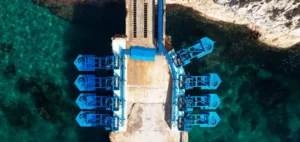It’s an under-exploited renewable energy: under the impetus of EDF, France wants to unleash the power generation “potential” of its dams, a national heritage that has been put to sleep by a long-standing dispute with Brussels.
Hydroelectric concessions: Hydropower at the heart of a thorny issue in Brussels
A little-known historical heavyweight in electricity production, hydroelectricity is at the heart of a discreet battle in Brussels, where the European Commission has been urging Paris since the mid-2000s to open up its dam concessions to competition. The hydropower fleet consists mainly of around 340 facilities operated under public service concessions.
The majority of these are granted to EDF (70% of national hydroelectric production), the others to Engie via its subsidiaries, Compagnie nationale du Rhône (around 25%) and Société hydro-électrique du Midi (less than 3%), according to the Cour des Comptes.
However, these contracts were “signed by the State in the last century and are gradually coming to an end”, pointed out the financial magistrates in a February report.
“Thirty-eight concessions have already expired,” noted MP Marina Ferrari (MoDem) on Wednesday, during a hearing of EDF CEO Luc Rémont at the French National Assembly.
After two European formal notices in 2015 and 2019, the case is now at a standstill… The Cour des Comptes has called on the government to “rapidly resolve this situation, to prevent the overall management of the hydroelectric fleet from deteriorating, and to prevent it from playing its full role in the energy transition”.
Blocked investments in hydroelectricity: EDF proposes a change of regime
So how do we get out of it?
As Luc Rémont pointed out on Wednesday, EDF is arguing for the facilities to be operated under the authorization system, as “in most European countries”, which would free up investment.
“The concession system in itself is blocking investment”, he justified, presenting his proposals for hydropower for the first time.
According to EDF, this system requires the facility to be put out to tender again if it is to undergo substantial investment, for example to increase its power output. This is likely to put the brakes on major modernization projects for aging facilities.
“At a time when the country needs more controllable decarbonated energies (…) it is desirable for the country and even for Europe that we are able to resume investment significantly in the field of hydraulics,” insisted the CEO.
“On the contrary, an authorization system would allow us to “invest in dams without losing their operation”, sums up an EDF spokesperson.
“Whatever the government’s choice, the solution must comply with European law, be shared by all public and private players, and be fair,” insists another industry player.
The weight of hydraulics is far from negligible. According to the Cour des Comptes, “France has the largest power plant in the EU, with a capacity of 25.4 gigawatts”.
Hydropower, France’s leading renewable energy source: Significant development potential
The nuclear power plants account for 61.4 GW. Hydroelectric production, even though it fell in 2022 to its lowest level since 1976 due to drought, accounted for 11% of electricity production in France.
It remains France’s leading renewable energy source, ahead of wind and solar power, and has the advantage of being storable.
“Our country still has potential in the field of hydraulics”, which would “not necessarily require new constructions”, but “transformations” such as “raising” dams with a “limited environmental impact”, developed Luc Rémont.
The “development potential is still very significant, with at least 500 megawatts of increased power and 1,500 MW of capacity in pumped-storage power stations (STEP) by 2035. And other projects are being studied to add a further 2 GW,” explained Emmanuelle Verger, Director of EDF Hydro.
A special kind of dam, a WWTP operates like an open-air “mega-battery”, thanks to a system of turbines that release and then pump back the water. France has just six of them, although they can absorb peaks in consumption and production.






















